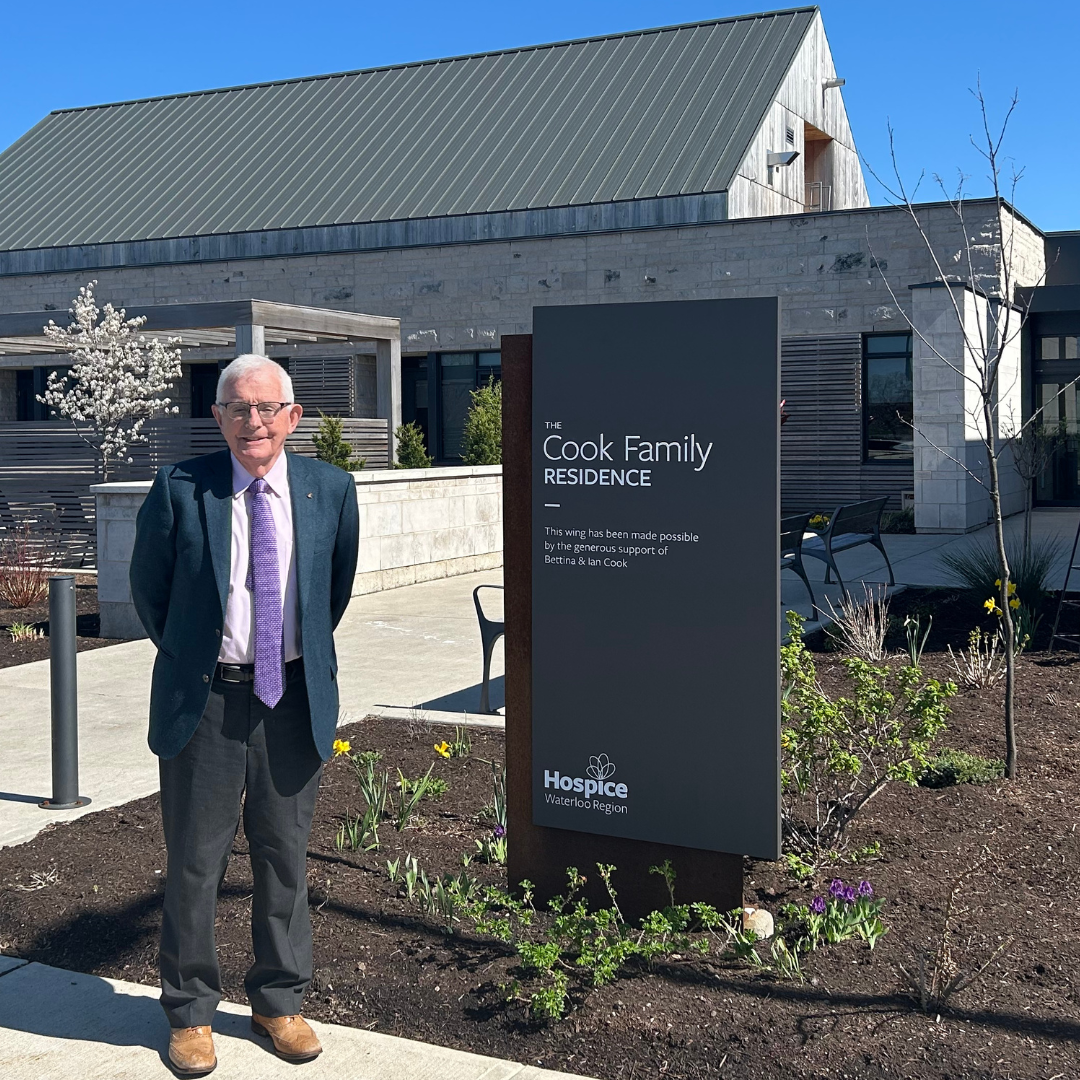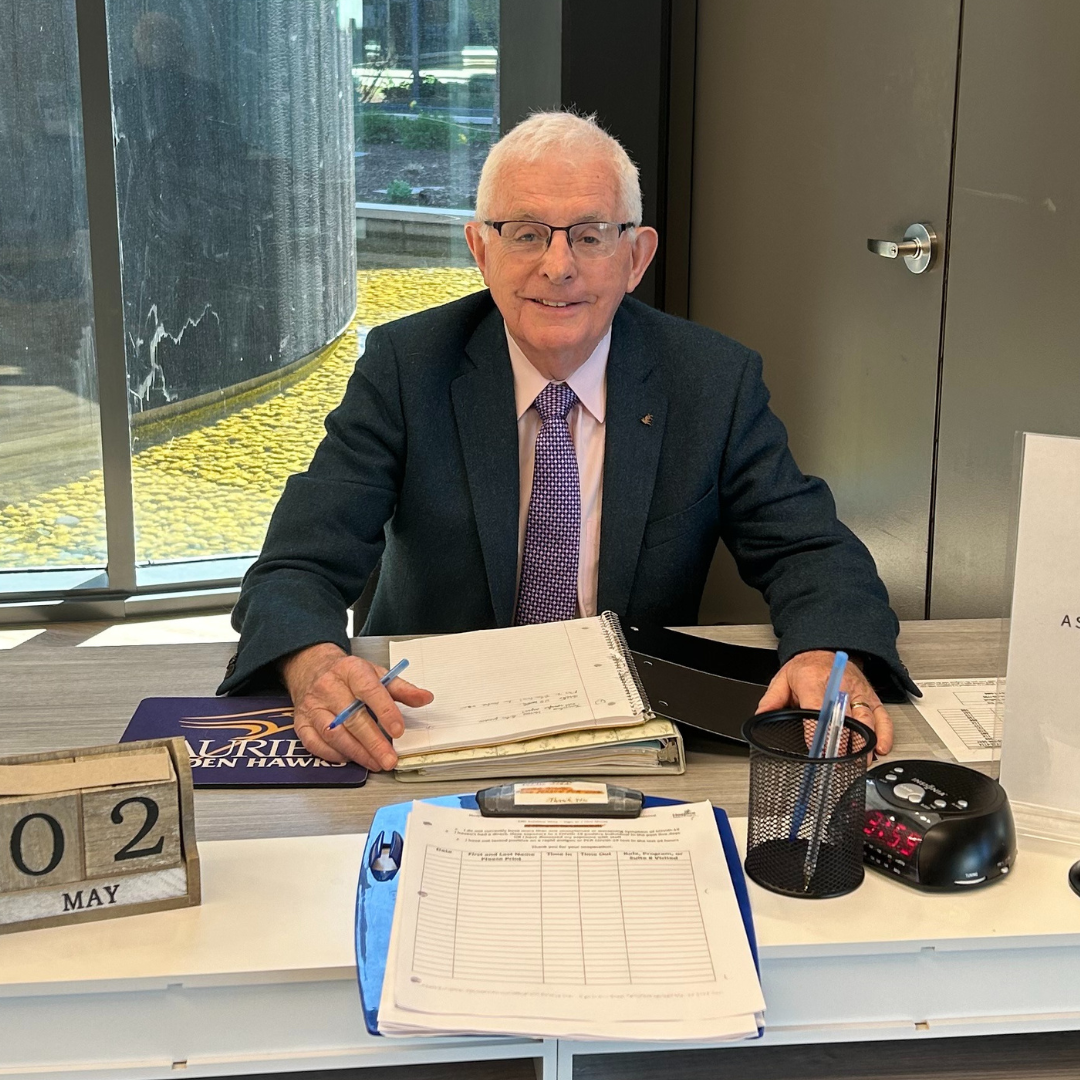
I find that my weekly hospice engagement ranks among the most meaningful work I have done in my life.
GUEST BLOG POST
There are many volunteering opportunities in Waterloo for retired persons. One of the less well known is hospice volunteering. The mission of the hospice is to provide compassionate, high quality care for individuals who are at the end of life. I have been a hospice volunteer for just over a year and I have found the work rewarding, fulfilling and sometimes challenging. It may be of interest to share some of my experiences and reflections and help dispel some of the myths about the role.
The first step was to complete a volunteer application to Hospice Waterloo Region. This application calls for three references. As a Client Support Volunteer, I was required to complete a 35 hour on-site training program. I found this course very valuable. Among the topics covered were: introduction to hospice and palliative care, the volunteer role, death and dying, respecting boundaries and communication.
We were shown how to provide companionship to the patients and their families and how we could best support the interdisciplinary team of medical professionals. Three items that stood out for me from this course were: (1) The importance of empathetic listening, (2) As volunteers our role is not to fix things, (3) Platitudes such as “It will all be okay” are not helpful.

Volunteers can select from a range of different roles such as greeting visitors at the hospice reception desk, visiting clients in the community or in the hospice, bedside vigils and bereavement walking. I choose to work three hours per week as a reception volunteer. My main task is to greet the family and visitors as they enter the hospice and make them feel welcome. We also provide information to make their visits more comfortable.
On the front desk I meet a wide variety of visitors. They are coping with very personal grief and sadness in their own way. Some of them are very quiet, a few pause for a brief chat and others are eager to have longer conversations. From time to time one of the more mobile residents who is out for a short walk drops by for a chat. I treasure all these interactions and connections. I have met some amazing people and I have been privileged to hear some wonderful stories.
From time to time one of the more mobile residents who is out for a short walk drops by for a chat. I treasure all these interactions and connections.
Sometimes a family member will bring the resident’s favorite dog to the hospice. As a dog owner myself, I find it very easy to start a conversation with a fellow owner. You can safely ask “How old is your dog?’ or “What breed is your dog?” These are not questions that you can ask a human being. We also have a box of treats available if the owner grants permission. Pets and children add sparkle to a visit.
Although I find the work very uplifting there have been a few challenges. When I started I had no experience of hospice work. I was afraid I would mess it up and do or say the wrong thing. The hospice training helped give me confidence and before I started on my own I did a shadow shift with a very experienced volunteer. I was also worried that I would not be able to find the right words to say to a person who was suffering extreme emotional pain. I eventually realized that sometimes it is okay to say nothing and just be there for the other person.
I was also worried that I would not be able to find the right words to say to a person who was suffering extreme emotional pain. I eventually realized that sometimes it is okay to say nothing and just be there for the other person.
My biggest challenge stems from the fact that as we get to know and connect with the families, we experience loss when their loved one dies. As a way of dealing with this loss, the hospice offers debriefing sessions to enable staff and volunteers to manage their stress and grief in a safe setting. I found that another helpful activity was to read books on death and grief. My favourite authors are Rachel Clarke, Kathryn Mannix and Harvey Max Chochinov.
I find that my weekly hospice engagement ranks among the most meaningful work I have done in my life. It is inspiring to work in this positive space with dedicated staff who place steadfast emphasis on patient care and patient dignity.
I am awestruck by the dedication and devotion of the families of our residents. In one case a family member arrived at the hospice every day before dawn and stayed until after dark to spend time with their spouse. What an undying expression of true love. Tough times can reveal the best of the human spirit.
Phelim Boyle
Volunteer, Hospice Waterloo Region
